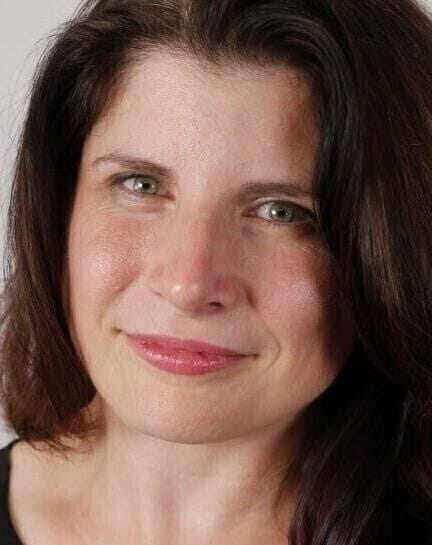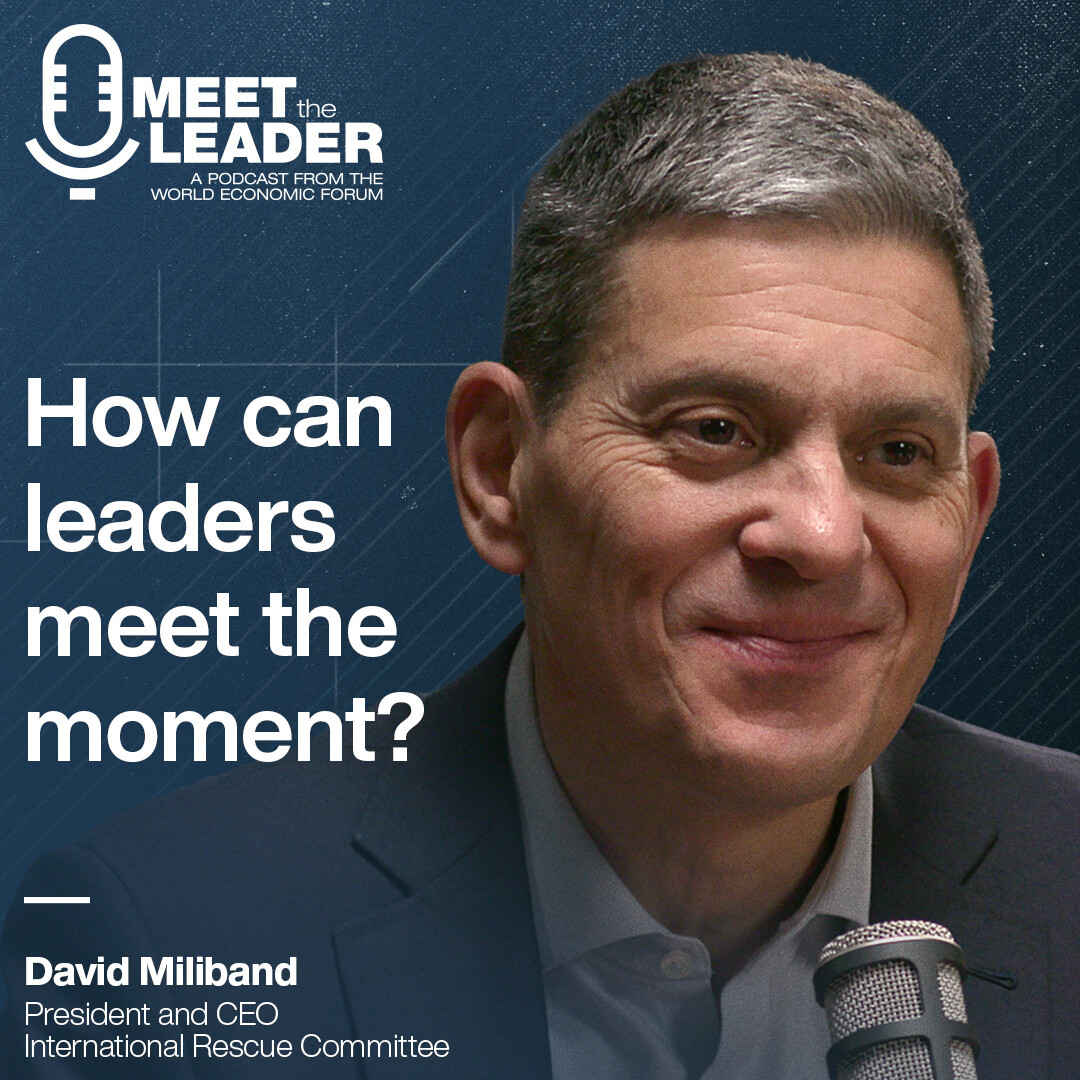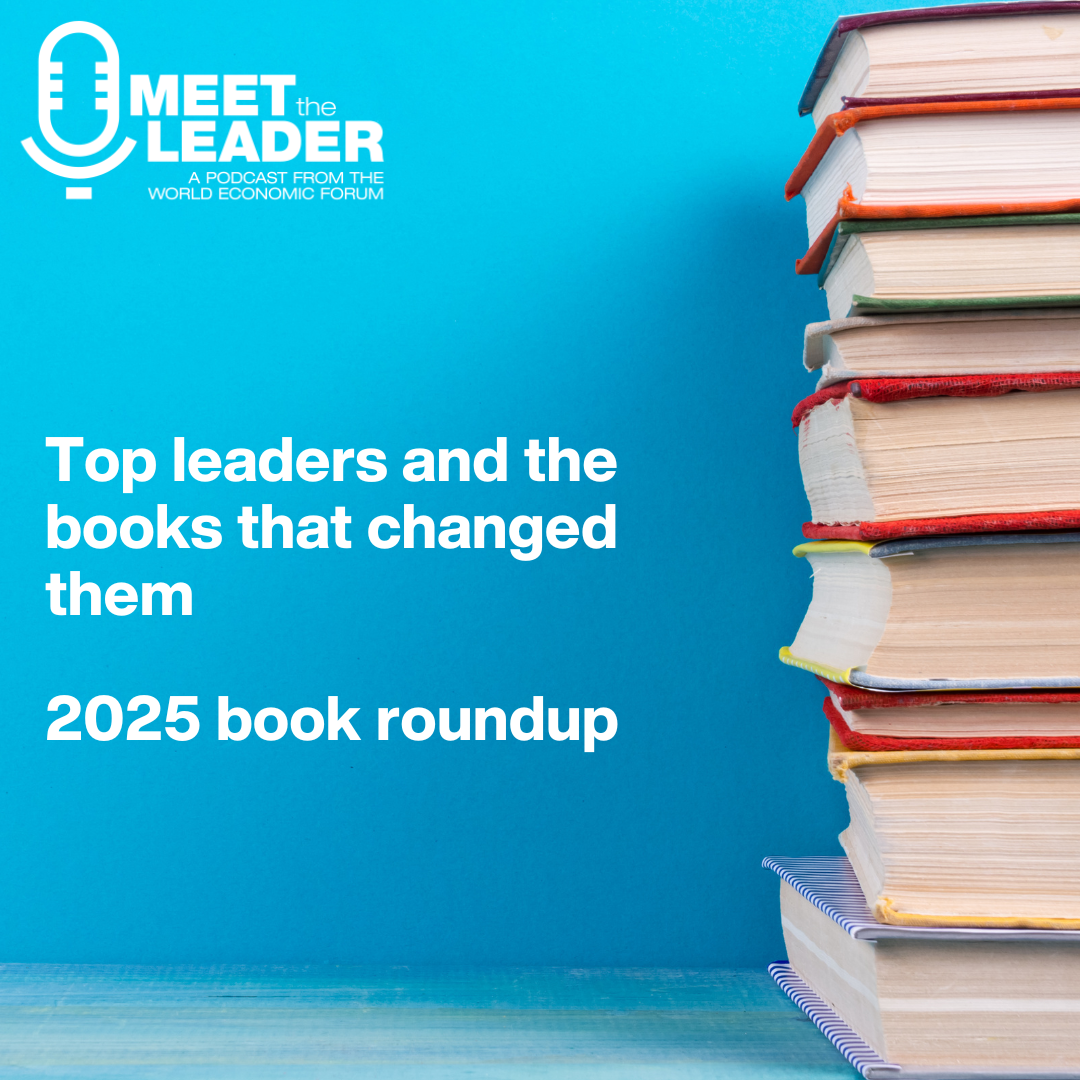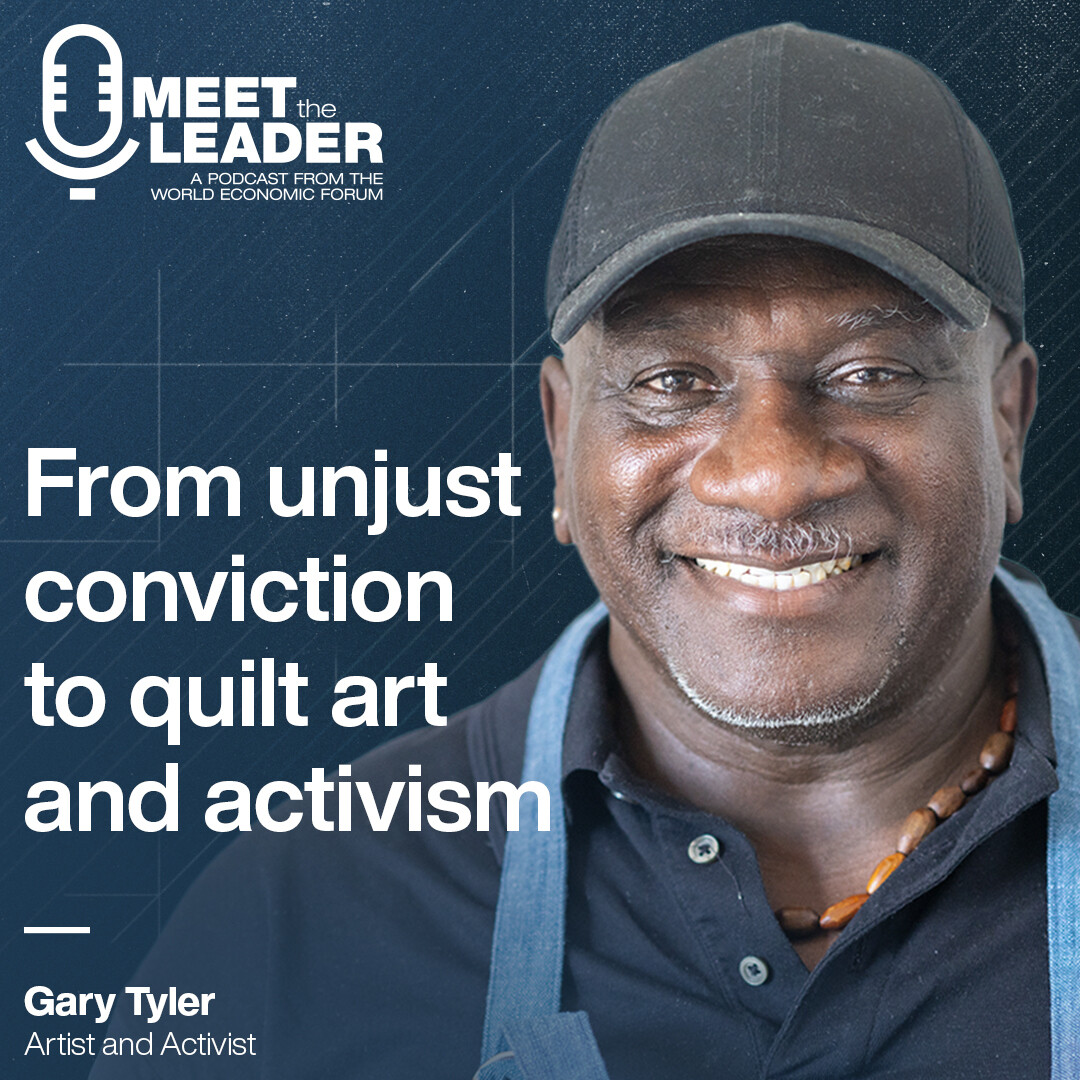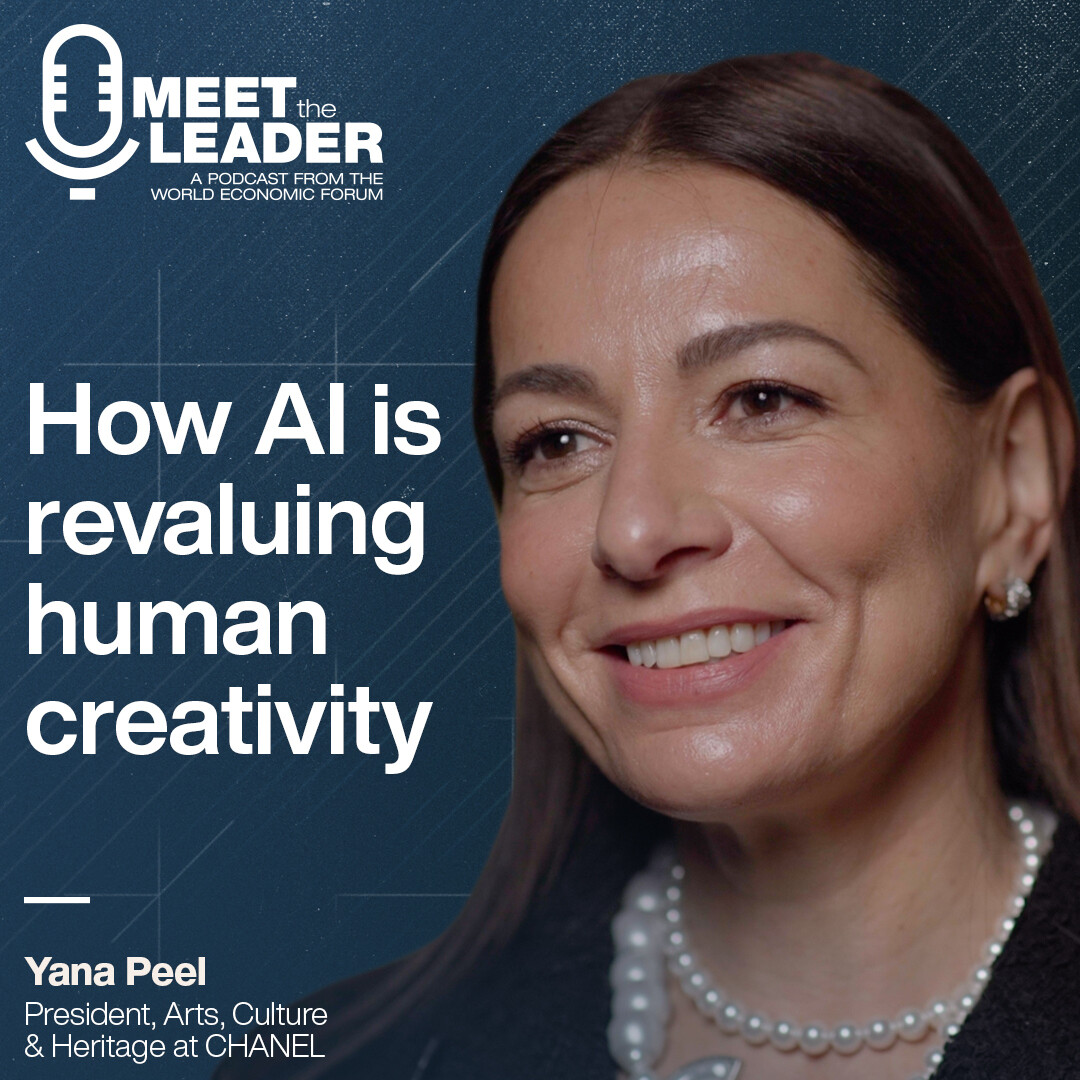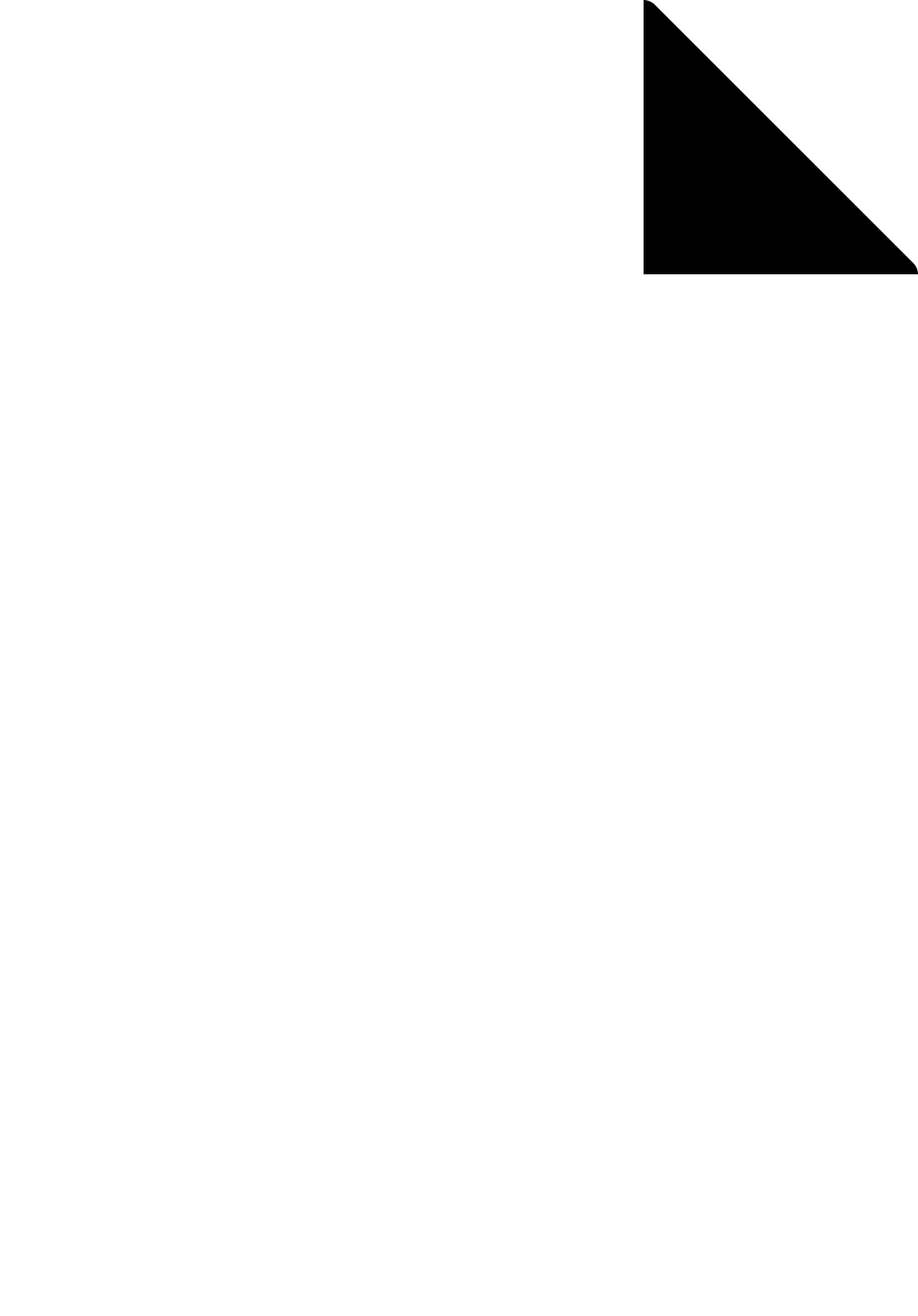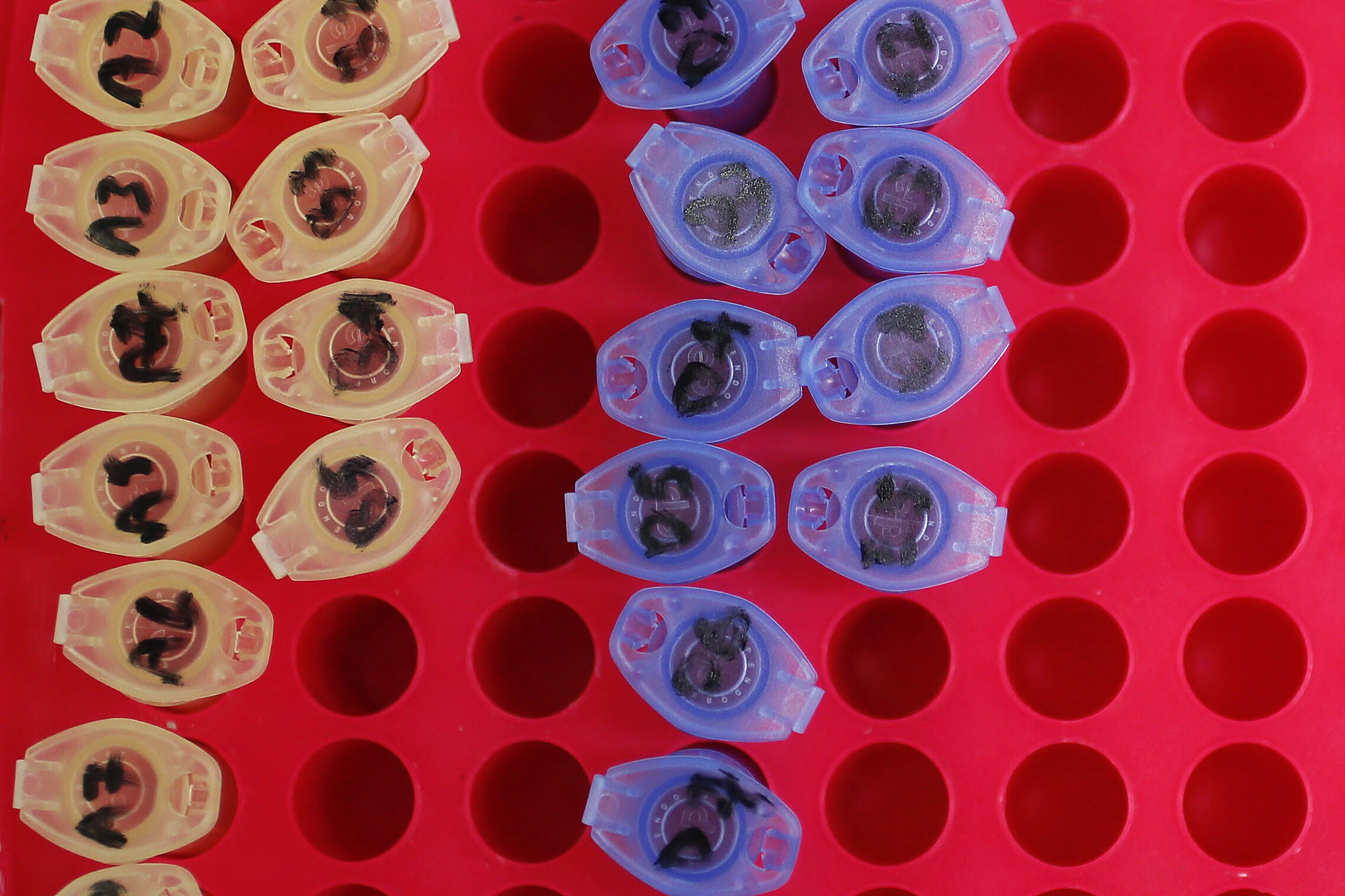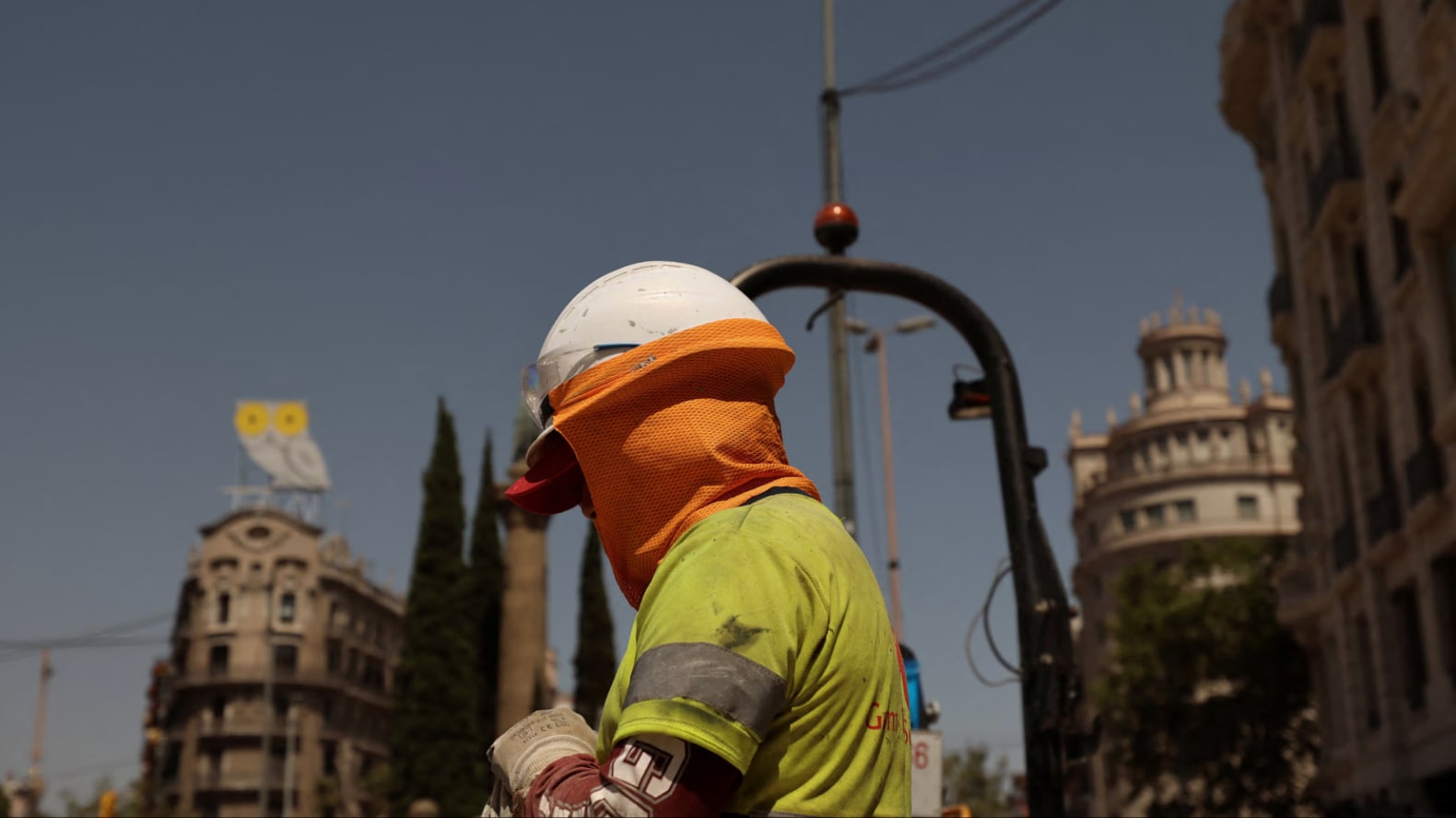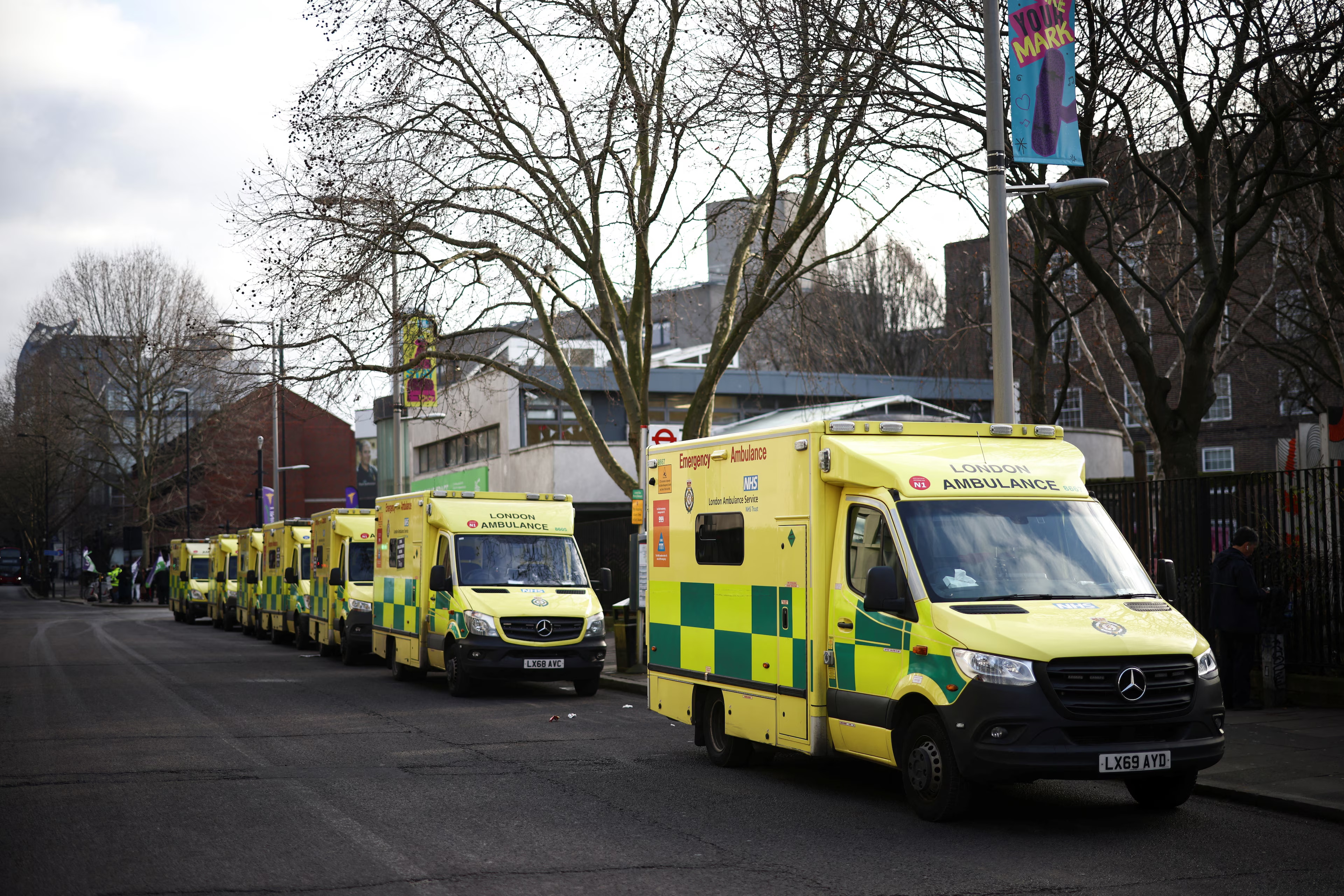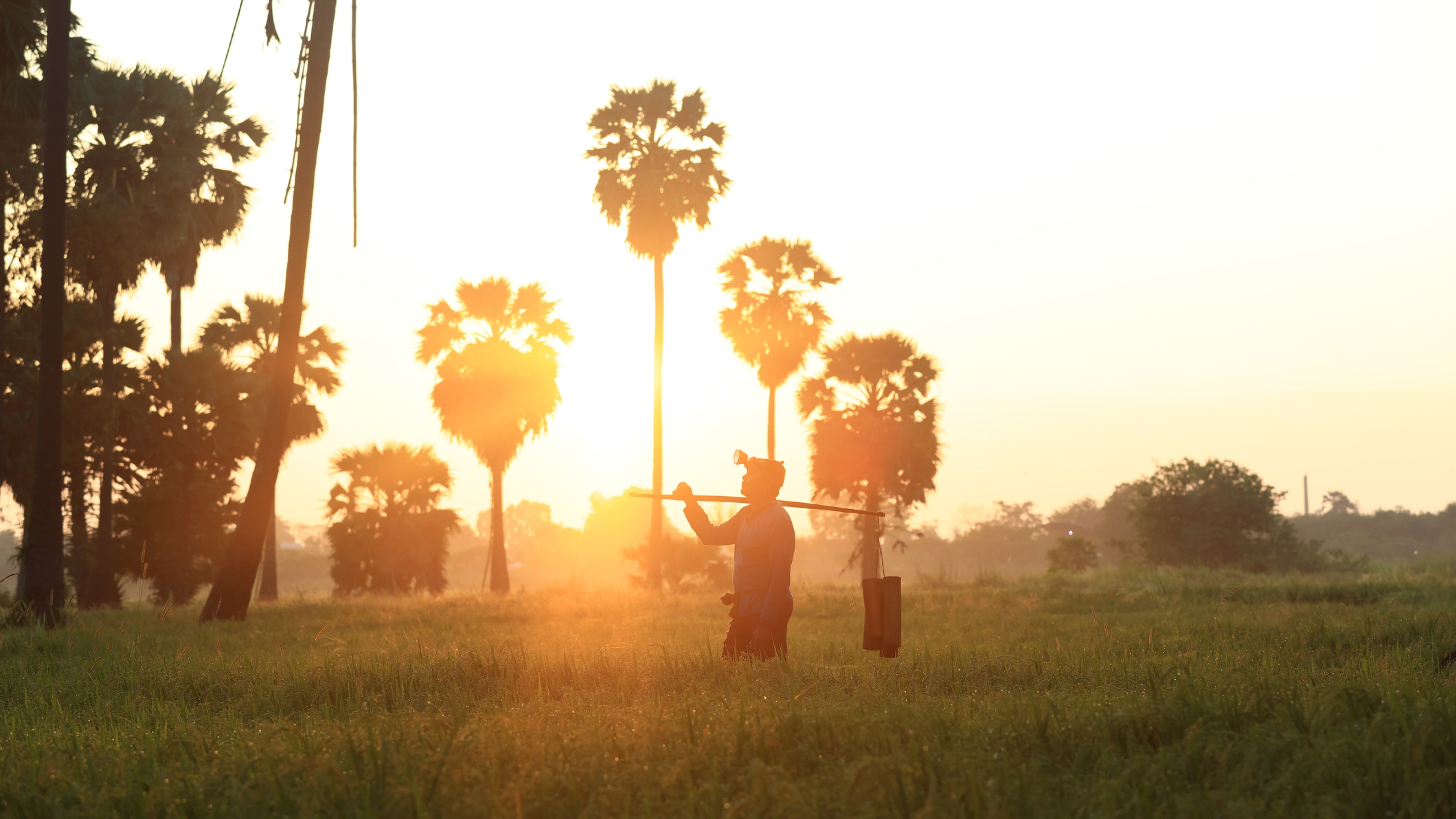Bridging the gap in women's health research, policy and innovation: Kearney
播客文字稿
Linda Lacina, Meet The Leader Welcome to Meet the Leader, the podcast where top leaders share how they're tackling the world's toughest challenges. In today's episode, we talk to Paula Bellostas Muguerza. She'll talk about what's needed to bridge the gap in women's health and what any leader can do.
Subscribe to Meet The Leader on Apple, Spotify, and wherever you get your favorite podcasts. And don't forget to rate and review us. I'm Linda Lacina from the World Economic Forum. And this is Meet the Leader.
Paula Bellostas Muguerza, Kearney Chances are you're going to have some women in your organization, and you should absolutely be looking after their health, because we firmly believe that it's healthy women, healthy corporations, healthy economy.
Linda Lacina, Meet The Leader Only 7% of healthcare research focuses on conditions that exclusively affect women. And only 5% of available medications have been fully monitored, tested, or even labeled with the right safety information for women who are pregnant or breastfeeding.
Given the underfunding of women's health and the underrepresentation in clinical trials, it is no surprise that women live in poor health for 25% more of their lives compared to men. Bridging these gaps in understanding as well as treatment and innovation can be truly life-changing. In fact, according to a report that the World Economic Forum released last year, bridging the women's health gap can give women seven more healthy days a year. They can even provide a trillion-dollar jolt to GDP in the next 15 years.
Paula Bellostas Muguerza understands this well. She is the global head of healthcare and life sciences at Kearney, a global consulting firm. She knows the role that things like policy can play in creating incentives for real change, and even in educating leaders, technologists, and those driving clinical trials.
She'll also talk to us about what she's learned from [W]Helath. That's a platform she helped found that's grown into a community of 350 organizations all committed to redesigning health care, sharing best practices and bridging gender care gaps. She'll talk to about what's she's learned, as well as her own personal experience with an unexpected health crisis and the fight she undertook to get the treatment she needed, a story that drives home the need for improved support for women's mental and physical health.
We'll talk about all that, but first, she'll share more about the women's health gap.
Paula Bellostas Muguerza, Kearney There is a really common misconception out there that because women live longer, there isn't a women's health gap. The reality is that even though we live longer we spend more time in ill health and disability. So there's a little bit of difference between what we call the lifespan and the health span.
And there's are a lot of reasons why this is happening is because we don't understand the biology of women really well, because we haven't really invested in understanding this biology or looking at the differences between male and female. And the third thing is that there's still a little bit of bias across all parts of the health value chain.
Linda Lacina, Meet The Leader And so let's talk a little bit about the mental healthcare gap for women, which is even more interesting.
Paula Bellostas Muguerza, Kearney So what I would say is if we expand the definition of the mental health gap for women's health, I would talk about brain health overall. And one of the fundamental things that we're starting to understand right now is that the brain physiology and biology of a male and a female are completely different. So that means that we are more prone to develop depression two times as much, the same with anxiety, two times that much. And then also when we think about neurodegenerative disorders like MS or like Alzheimer's disease or dementia, we actually probably represent about 70% of the prevalence of those diseases.
So studying the brain of women is going to be a real fundamental analogue for us to live healthier lives and also to live longer.
Linda Lacina, Meet The Leader And so if we redesigned the health care system to sort of tackle all these issues, all these gaps that we have with women's health, with mental health, what does the world look like? How is it different?
Paula Bellostas Muguerza, Kearney It will be amazing. We're going to unlock some economic opportunity first of all. I think a report from the World Economic Forum highlighted that we would inject $1 trillion into the economy and that is fine but we need to be led by the fact that it would just all be more equitable. And one of the things that we need consider as well is that women make 80% of the economic and the health decisions of the family, they're the chief medical officers of the home.. But also in markets like the US and it is really across the globe, they represent between 70 and 80% of the healthcare workforce. So if women aren't healthy, they're not gonna be able to look after other people that are unhealthy to make them better. So just the effects just multiply if we start to think about looking after women.
But you asked me, what will it take, so what are the kinds of things that we would want to do practically? It's very multifactorial, the problem, because we've got a lack of funding, like we said. We've got lack of research because women weren't included in clinical trials from 1993. We were excluded because there were some issues that happened with feotal development during a clinical trial in the past. So we need to get the data. We need to think about women differently when it comes to diagnosis and putting the health of the entirety of the woman, not looking after their individual body parts. And we also need to make sure that policymakers and governments are paying attention to this issue.
So imagine a world where we really understand the differences in biology between men and women, and we don't think as women as small men. So imagine if we knew all of that. We could develop innovations both from a drug perspective and from a diagnostic perspective that are really tailored to women. So what we call gender precision medicine.
The outcomes would be better, then women would be looked after from the system in a way that is suited around them. So you wouldn't go to the doctor one day for your cervical smear and another day for your breast examination and another for your test on your cholesterol. They would look at you in the round and across your life course, whether you are just in kind of pre-maternal stage, during your maternal stage or as you're heading into menopause.
The other thing the funding would be flowing because all of the investment banks and the private equity funds would see the economic opportunity. We would have loads of data and I think we would just be a more prosperous and healthier society.
Linda Lacina, Meet The Leader You founded an organization called [W]Health. Tell me about that and how it came to be.
Paula Bellostas Muguerza, Kearney So when we started to understand the problem of women's health, we felt that we needed to just bring the collective force of lots of different organizations.
So together with a company called FemTechnology and the leader called Oriana Craft, we started write this open letter about all of the things that needed to be changed to close the women's health gap. And then we felt, you know when you have a child and you're like in that dark tunnel of, oh my God, I don't know how I'm going to look after this individual, I'm new to all of this. And we always say it takes a village to raise a child. We felt that it was going to take a village to close the women's health gap. So we decided to enlist organizations that would say, we agree with the opportunity, we agree with the challenges and we agree with the actions that we need to take. And we got 50 of them on board. And then since then, we founded what we're calling [W]Health, because we think that women's health is wealth, and we are now at 350 organizations that are working on all of the levers that we discussed from investment to data generation, to innovation, to policy and advocacy.
Because I think we can achieve so much more together rather than if we go at it individually. And it's very much about leaving the logos at the table and just bringing your passion, bringing your contribution and trying to do a good thing.
Linda Lacina, Meet The Leader So [W]Health has launched a special index that helps organization new tool that allows organizations to evaluate how they're doing on closing the gender health gap. Why is this so helpful?
Paula Bellostas Muguerza, Kearney So what we felt is that, imagine the problem or the opportunity sitting in front of us and it's a really big elephant and we need to, the challenge is eat the elephant. Well, where do we start from? Do I start from the tail or the trunk or like the ear or whatever? It's just so massive that we didn't know where to start. And organizations feel like this. A lot of the ones that are partnering with us on this platform say, I want to do something but I have no idea, am I already doing good things? What should I be doing differently? Almost like, guide me through this thing.
So what we decided was, how about if we first of all assess, where is everybody at in those organizations that are contributing to health care delivery in the value chain? It could be pharmaceutical companies, it could consumer health companies, med tech companies, investors, health care providers and payers. Let's give them a tool where they look at their own operations and they say, okay, this is where I'm doing great, and this is why I could be doing better.
And then year on year, get them to see how they've progressed and whether they have moved the needle. And then for all of us to collectively add the overall sector and multi-sector level, see where are we and where are the incremental change that we need to do.
And then there's a flip side of the index, which is if you're a very large employer, doesn't really matter if you working in oil and gas or if you are a bank, chances are you're going to have some women in your organization and you should absolutely be looking after their health because we firmly believe that it's healthy women, healthy corporations, healthy economy.
So we're giving them the tools to look at their policies, their benefits, everything that they're doing within the organization. To make sure that they are looking after the women, to make that they will reduce absenteeism, we make sure those women progress in their career, because at the end of the day, representation is going to drive representation and we really believe that we can create a noble effect of positivity for women and for the economy as well.
Linda Lacina, Meet The Leader Are there any sort of best practices that may have been emerging that leaders listening to this or watching this can be like, okay, that's really interesting, i should be taking that forward.
Paula Bellostas Muguerza, Kearney Yeah. So first of all, we developed it with our advisory board within W Health, who are, again, it's back to the village, it's a village of 30 organizations that are really pushing us to make sure that everything that we're doing is pragmatic, it is implementable, and it's going to deliver change.
So let me give you a couple of examples. So won't mind me saying their name, but we beta tested the employer index with Microsoft. It is a very, very large organization. And they thought that they were pretty advanced in the thinking about this. And what we found was twofold. One, that it was very patchy. So it was, I'll have a fertility benefit over here, and I'll a menopause benefit over there. But they didn't have the sort of the connective end-to-end thinking of, "okay, I've got an employee that might be joining, and they might be having trouble with their menstruation. They may have PCOS [Polycystic Ovary Syndrome], they may have endometriosis, which may lead to fertility issues, and then what's going to happen to them when they reach menopause." So that life course approach to the female population was lacking.
And then the other thing that we found is that in these very large global corporations, they have very different approaches in the different countries. So you could find something really cool happening in the UK or something amazing in Japan or something in the U.S. and it's how can we raise all countries to the same standard and the same level so that we're impacting very large employee populations across the globe.
Linda Lacina, Meet The Leader If we can switch gears now, I want to talk a bit about burnout and a personal experience you had with the mental health gap and the turning point you experience. Can you talk a little about that?
Paula Bellostas Muguerza, Kearney Yeah, I'd love to tell you about my burnout story. And it's taken a few years to almost look back at it and see it as a positive thing that happened in my life, but it really didn't feel positive at the time.
I think it was 2015 or 2016. So again, it's coming up to nearly a decade ago. And I've always been a bit of a people pleaser and always putting my hand up for everything. And then almost like when you're in a meeting and somebody tells you, oh, who would like to take this on? Like without me knowing, my hand would be going up. And then I ended up at a time when it was a really busy period at work. And one of my colleagues actually went on mental health leave. And I have this sort of like superwoman syndrome of I must save the situation. So I know that he's off and I know my plate is already very full, but give me his workload and I will deliver for you.
And within about three months, I started to get these like really horrific headaches, but I just pushed through and pushed through and pushed though. And I knew that physically I was getting to the limit. So then just one day I was on a conference call in a meeting room and I thought something weird is happening with my face like it started to droop. So I walked out of the meeting room and then my boss at the time just looked at me and said we need to get you in a taxi or an ambulance to the hospital, you're having a stroke. I was like, how am I going to be having a stroke? Like I'm young, this can't be happening.
So we go to the hospital, got triaged in straight away and they scanned me and they said there isn't any blockages, we don't really know what's happening.
So I went back to work the following day. And then from that day onwards, for about 30 days, I was having one of these like droopage, like seizures where everything was spinning around me, every single day. So again, this kind of somewhat links to the women's health discussions we were having earlier. I got passed between so many different people and it was neurologists and it's cardiologists and there was all sorts of different things, psychologists to see what is happening and nobody could figure out where I was.
Until eventually they said, this is a very, very rare, what they called epigenetic form of migraine. And it's called hemiplegic migraine, and basically you have it in your genes that you could have the potential to develop this, but it only manifests if you have put your body under a lot of strain. So a lot cortisol and a lot adrenaline is going to trigger this.
And once you start having them, you're forever going to have them. But they started to get so severe that I would wake up in the morning and then this thing would happen. But then from my face, then it went to my hand and then went to my leg. So there were days when I couldn't really walk. I couldn’t really just kind of feed myself or like go to the toilet on my own. So I needed a lot of help from at the time, my fiancé, who's now my husband and father of my child. So he's stuck around because at that time he could have gone like, I don't know what's going on. I'm getting out of here. But a lot help from my friends, a lot of support from my now husband and also from my employer, to be fair, to just make sure that I was supported. But I couldn't work for six months because these things kept going. And the brain fog, the pain, the sort of feeling of the room spinning and then the inability to function meant that at the time they didn't really know if I was going to be able to work again.
So moving around neurologists, eventually I came across somebody that said, "we need to completely reset your life." You need to go back to no caffeine, no sugar. We need to kind of like clean you up entirely. You need just start doing strength training. You need you get your steps in. We need to get you to speak to somebody to offload some of the reasons why this has happened because physical health and mental health are so intertwined.
So I had to do all of those things. It came to the point where I started to get a little bit better, but it was still happening. And what they decided was, okay, we've got two options. One: we continue on this path and we try a medical device. Or, we put you on this therapy, which the side effects are pretty significant and you could go into manic depression.
So I said, okay, no, I'm gonna try the device and continuing with this sort of like clean living. And at the same time, I was having very intensive therapy because why did I feel the need to constantly put my hand up to totally just say yes to absolutely everything? And there was a lot of soul searching to say, well, where is your source of self-worth and self-esteem? Why do you need all of this external validation? Where is this coming from? Is that something has to do with upbringing, something has do with gender, something is just so convoluted, but I really had to do the work so that if I was to return to the workplace, it wouldn't happen again. So finally I made it back, so six months off, and I returned. And I think it's just, I've been on an eight-year journey of discovery ever since.
Linda Lacina, Meet The Leader And how do you work differently now and live differently? What are the main steps?
Paula Bellostas Muguerza, Kearney So post-burnout, I had to kind of like reset on everything.
So first of all, from a physical health perspective, so making sure that I wasn't abusing sugar and caffeine and alcohol, eating a lot of protein and a lot of vegetables and fibre, and exercise, exercise, exercise for me is like my outlet to make sure that my brain stays healthy.
And then the second piece is I'm throwing myself back into the lion's den here. So I can do all of these good things on the physical health side. But if I don't make sure that I don't address the other pieces, I could go back very, very quickly. So the first thing was I need to learn to set boundaries and say no.
And two things happened. I did a graduated return. So the 1st week, I was there for an hour. Second, week, I was therefore 4 hours. 3rd week, and I built it up over a course of about 2 to 3 months until I went back at full time. And that in itself was a learning experience because how much can you do with a small chunk of time? You can't say yes to everything. You have to be very deliberate as to what you take on and what you say no to. So that was my sort of like coming up to speed and then until we were able to take the little wheels off and I was off on my bike.
So that was one thing just learning to say no and sitting with a discomfort of saying no and then really sitting with the feeling is like why is this uncomfortable? Is this uncomfortable because somebody's going to think less of me and then going once and saying, "Why do I need them to think that I'm amazing? I need to tell myself that I am amazing. I don't need all of these other people."
And then the third thing was just the difference between what we call extrinsic and intrinsic motivation. So extrinsic motivation is when you're motivated by things outside of you. So it could be money. It could be visibility. It could power. It could somebody giving you a nice little pat on the head, which was totally my motivation. And to actually, "Why am I doing this that makes me happy, that makes be fulfilled, that makes want to do these things?" And doing more of that, finding more the opportunities to really cultivate that intrinsic motivation. Because if you're intrinsically motivated, you don't need as much of the external stuff. So it was a combination of all of those things.
Linda Lacina, Meet The Leader If I am a leader, looking to prevent burnout in my team, or even a worker looking to self-care, what should I think about or do since, as you point out, you might not even realize you're experiencing burnout when you're in it. What should people do?
Paula Bellostas Muguerza, Kearney Let me start by talking about how to identify burnout in yourself. So, burnout was a condition that was kind of studied and first accepted by the WHO, I think it was something like 50 years ago. And it came from, I think, it was a German centre of support workers for the community that really wanted to give, and then they started to experience this fatigue and quickness to anger and irritability and the inability to switch off and your brain is constantly on. And there was a doctor as part of that team. And he started to see all of this happening within the employees of this system. And that's when he sort of put together burnout.
So as an individual, if you start to feel like you are not able to rest at night, that your mind is constantly whirring, that even to your loved ones or to your colleagues, you're very quick to anger. You're very kind of cutting and sharp. And that even though you have a mountain to do, you sit down to do your work and you actually cannot because you can't see the wood for the trees and you almost don't know where to start. Those are real symptoms of burnout.
So that's how, as an individual, you can watch out for it. But also, critically, we all work in teams these days. So it's also the responsibility of looking out for those factors in others as we cooperate really closely.
The main thing that I would say to leaders is that we need to create a culture of openness about mental health in the workplace. I feel that we took some really positive strides on the lead up and in particular during the pandemic because everybody was really worried about there's so much instability and this is affecting individuals' mental health. But I think we've come on the back of that.
And I think two things. One, that I really think that we all have a little bit of post-traumatic stress after the pandemic that it is just bubbling in there and we haven't addressed. And it's also a little bit now like the return to like, we must like, productivity, productivity, productivity and presenteeism in the workplace and all that kind of stuff.
So how do we make sure that mental health continues to be a conversation in the work place? That we create the safe spaces where everybody can talk about it so that if you're feeling that yourself, you don't feel like the career opportunities are going to go away or you're going to be looked at differently by your bosses or your colleagues. And also that we feel that we can support each other if we see somebody's going through this.
Linda Lacina, Meet The Leader And your last question, is there a piece of advice that you've just always been grateful for?
Paula Bellostas Muguerza, Kearney So the piece of advice that I've always been most grateful for, I grew up in the north of Spain, in a very small town. I come from a family of entrepreneurs who just cultivated a number of failures and then a couple of successes, thankfully. And my parents always taught me from the beginning, you have to work hard, you have be kind, and then good things would happen.
Linda Lacina, Meet The Leader That was Paula Bellostas Muguerza. Thanks so much to her, and thanks so much you for listening.
Paula recently worked with the World Economic Forum on a special white paper, Prescription for Change, Policy Recommendations for Women's Health Research. Learn more about how changes in how we collect data or work with those conducting clinical trials can bring a step change for half the population.
Find a transcript of this episode, as well as transcripts from my colleague's podcast, Radio Davos, at wef.ch/podcasts.
This episode of Meet the Leader was produced and presented by me, with Jere Johansson and Taz Kelleher as editor, Juan Toran as studio engineer in Davos, and Gareth Nolan driving studio production. That's all for now. I'm Linda Lacina from the World Economic Forum. Have a great day.
Women's health is under-researched and under-funded, leading women to live longer in poor health than men. However, tackling this gap can boost lifespans and GDP, a fact Paula Bellostas Muguerza understands well. This global head of healthcare and life sciences at consulting firm Kearney, discusses the role that policy and collaboration can play in creating incentives for real change, and driving awareness and education. She'll talk about [w]Health, a special platform she helped found that has grown into a community of 350 organizations sharing best practices to bridge gaps and what leaders can do to make change happen for their own organizations.
话题:
健康与医疗系统分享:
更多集:
每周 议程
每周为您呈现推动全球议程的紧要问题(英文)

